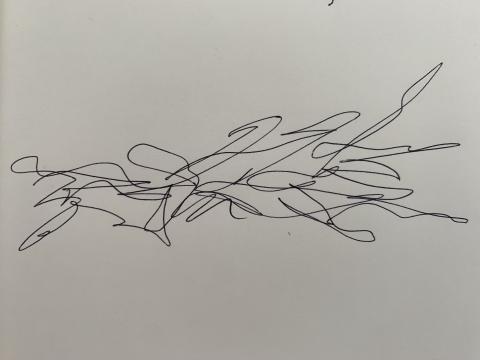
Visceral Histories, Visual Arguments is a three-year initiative (2022-2025) under the co-direction of Kate Elswit (with support from the Arts and Humanities Research Council (AHRC, ref: AH/W005034/1)) and Harmony Bench (with support from OSU’s Global Arts and Humanities Society of Fellows). The core project team also includes Tia-Monique Uzor and Nicola Plant. Visceral Histories, Visual Arguments engages with emerging digital techniques and technologies from the perspective of dance-based knowledge practices to further investigate how a data-driven approach that is tailored to the medium of dance can transform the use of digital tools to evidence and elaborate the historical study of embodied knowledge more broadly. Visceral Histories, Visual Arguments curates historical data that centres dance-based knowledge practices to create palpable visual arguments in the form of digital visualizations and immersive experiences, guided by choreographic principles.
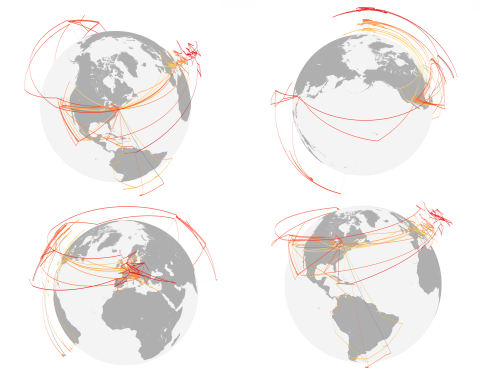
Dunham’s Data is funded by the Arts and Humanities Research Council (AHRC AH/R012989/1, 2018-2022), under the direction of Kate Elswit (PI, University of London, Royal Central School of Speech and Drama) and Harmony Bench (CI, The Ohio State University). Through this project, we explore the kinds of questions and problems that make the analysis and visualization of data meaningful for dance history. We do so through the case study of choreographer Katherine Dunham, manually cataloguing a daily itinerary of Dunham’s touring and travel from the 1930s-60s, the dancers, drummers, and singers in her employ during that time, and the repertory they performed. These curated datasets provide new means to understand the relationships between thousands of locations, and hundreds of performers and pieces across the decades of Dunham's career, and ultimately elaborate how movement moves. The core project team is joined by UK industry partners One Dance UK’s Dance of the African Diaspora and the Victoria & Albert Museum, as well as international knowledge exchange partnerships with digital projects at Ohio State (US), Ludwig Maximilians Universität Munich (Germany), and the University of New South Wales (Australia). We are thrilled that our team — Bench, Elswit, Antonio Jimenez-Mavillard, and Tia-Monique Uzor — received the 2021 ATHE-ASTR Award for Excellence in Digital Theatre and Performance Scholarship.
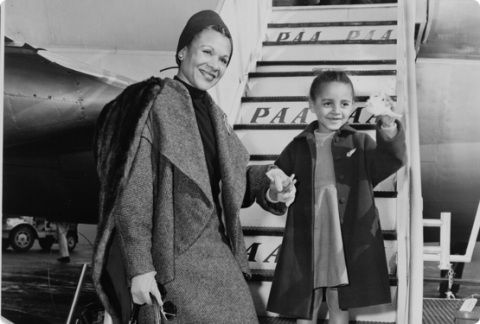
Dance in Transit (Harmony Bench and Kate Elswit, PI; 2016-2018) is a digital humanities research project that applies the tools of data analysis to the study of dance history. In particular, this project emphasizes the necessary relation between touring performers and the modes, networks, and infrastructures of transportation that link cities, countries, and cultures. Dance in Transit focuses on African American choreographer Katherine Dunham, whose work as a choreographer and anthropologist included research trips throughout the Caribbean, global travel for her work in the Hollywood film industry, as well as the domestic and international touring of her dance company. Dance in Transit seeks to make visible the itinerant life of a mid-century choreographer and bring focused attention to modes of transportation and transmission--as well as the relational infrastructures--that enable the global spread of dance. In addition to a Virginia Hull Research Award and assistance from the Undergraduate Research and Creative Activity Office at The Ohio State University, Dance in Transit is supported by a Battelle Engineering, Technology, and Human Affairs (BETHA) Grant.
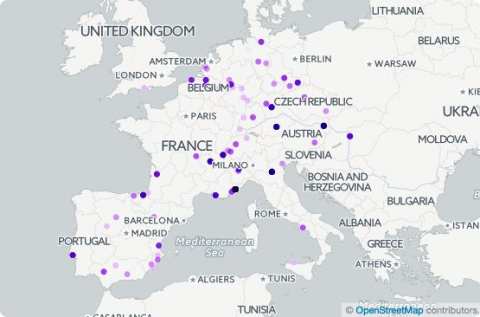
Mapping Touring (Harmony Bench, PI; 2014-ongoing, currently paused) is a digital humanities research project and initial foray into documenting and tracking the appearances of dancers, choreographers, and dance companies/troupes in the first half of the 20th century as they toured domestically and internationally. The particular concern was to represent the dates of performance, cities and venues, and repertory performed in each site. The project proposed that close examination of dancers on the move demands that scholars grapple more concertedly with global economies of movement in the early 20th century. In addition, as patterns of touring emerge, so will regional dance histories, offering a fuller portrait of local arts communities across the country. Finally, Mapping Touring aimed to make performers more visible to the historical record. The project laid some of the groundwork for research developed more thoroughly in later Movement on the Move projects, and though it is currently paused, I do hope to update both the data and methods that have been refined through this later work. Mapping Touring was supported by a Research and Creative Activity Grant from The Ohio State University, as well as a Battelle Engineering, Technology, and Human Affairs (BETHA) Grant.
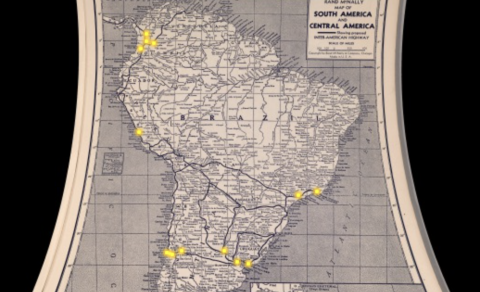
Moving Bodies, Moving Culture (Kate Elswit, PI, 2014-16) was an exploratory project that experimented with the potential for mapping and other visualization strategies to help scholars better understand the role of infrastructures in international dance touring. All data was manually curated from varied print archival materials. These explorations were archived as a series of blog posts, the majority of which come from a series of visualizations based on the 1941 South American tour of American Ballet Caravan. Moving Bodies, Moving Culture was supported by a Digital Humanities Summer Research Grant from the University of Bristol.